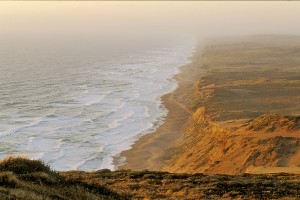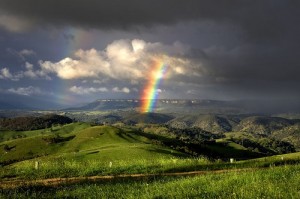by Chuck Summers
One of the primary reasons Rob and I started this blog site over three years ago was to help people see God in and through His Creation. Both the Old and New Testament teach us that God makes Himself known through the world He has made. Our lives are enriched spiritually by contact with nature. Creation is, in fact, one of God’s primary ways of speaking to us.
This past week, while reading Psalm 36, I was reminded that Creation also helps us speak to God. Pay close attention to the references to nature used in the Psalmist’s prayer: “Your love, O Lord, reaches to the heavens, your faithfulness to the skies. Your righteousness is like the mighty mountains, your justice like the great deep. O Lord, you preserve both man and beast. How priceless is your unfailing love! Both high and low among men find refuge in the shadow of your wings. They feast on the abundance of your house; you give them drink from your river of delights. For with you is the fountain of life; in your light we see light.” (vs. 5-9)

Here we see how nature not only reveals God to us but also gives us a means by which to speak of God’s greatness and our experience of Him. Whether we are speaking directly to God in prayer or talking about God to others nature equips us with metaphors and images that enable us to describe more adequately our feelings. The sky helps us describe the great scope of God’s love. The mighty mountains give us a way to portray God’s righteousness. The ocean depths illustrate the extent of God’s justice. The wings of a bird provide us with a way to depict God’s protection. God’s storehouse of treasures can be conveyed as a river of delights. The gift of life itself can be viewed as a fountain.

There are certainly many other places in the Scriptures where nature helps give the biblical writers the words they need to pray to, or speak about, God. At times you get the impression they would have been lost for words had it not been for what they saw in Creation. Even Jesus asked us to “consider the lilies” and to “look at the birds” (Matthew 6) when attempting to teach us not to worry and to trust God to take care of our needs. The apostle Paul, likewise, used imagery of nature throughout his letters to speak of the things of God. He used things like trees, seeds, and fruit to convey his message.
We are invited to follow in the steps of Jesus, Paul, and the other biblical writers. We, too, can use our observations of nature to help us pray and to speak about God. Creation can become like a dictionary for us, providing just the right word we need to express our praise or to convey our thoughts about God. If you’re not used to doing this I encourage you to give it a try. You will soon discover that there is no shortage of possibilities. Why, there are as many possibilities as there are stars in the sky or grains of sand on the shore or fish in the sea or ____________ (you fill in the blank).
-Chuck
(I took the top image of the Pacific Ocean at Point Reyes National Seashore in California; the middle image of the Russell Fork River at Breaks Interstate Park in Kentucky; and the bottom image of Mount McKinley and Wonder Lake at Denali National Park in Alaska.)
Dr. Chuck Summers is a pastor and photographer. His work has appeared in numerous national magazines and calendars. He has published three books: Kentucky: Unbridled Spirit and Beauty; A Year in the Cumberland Gap National Historical Park; and A Year in the Big South Fork National River & Recreation Area. You can view more of Chuck’s work at www.agpix.com/csummers. You can see more of his writings at SeeingCreation.com












